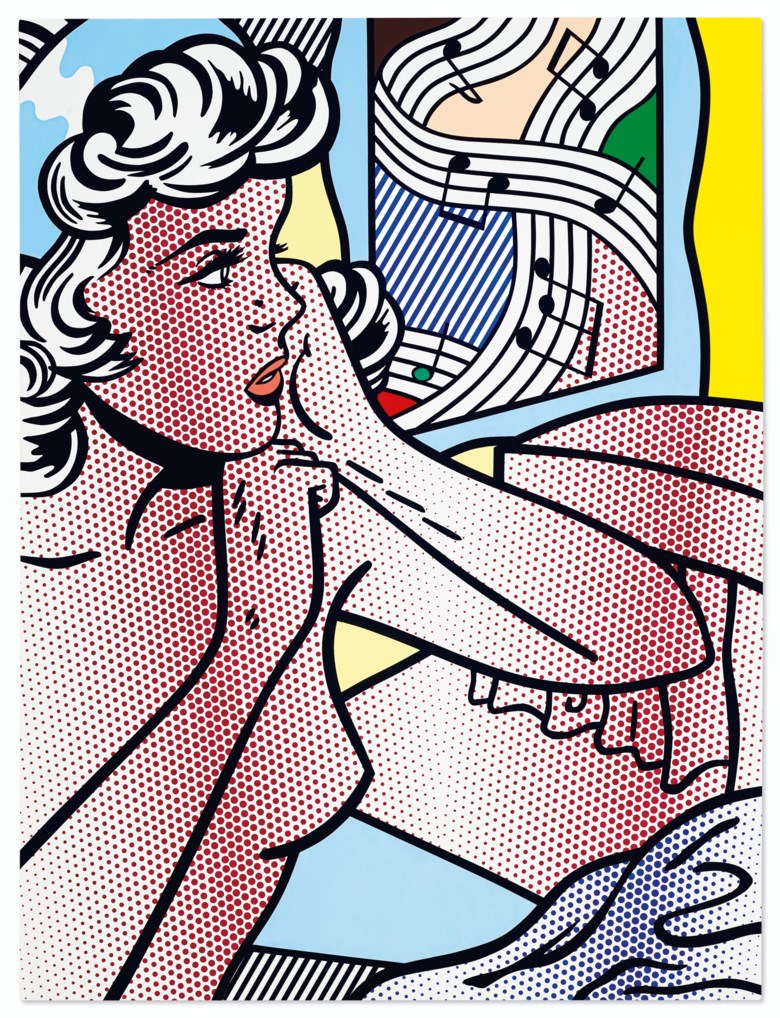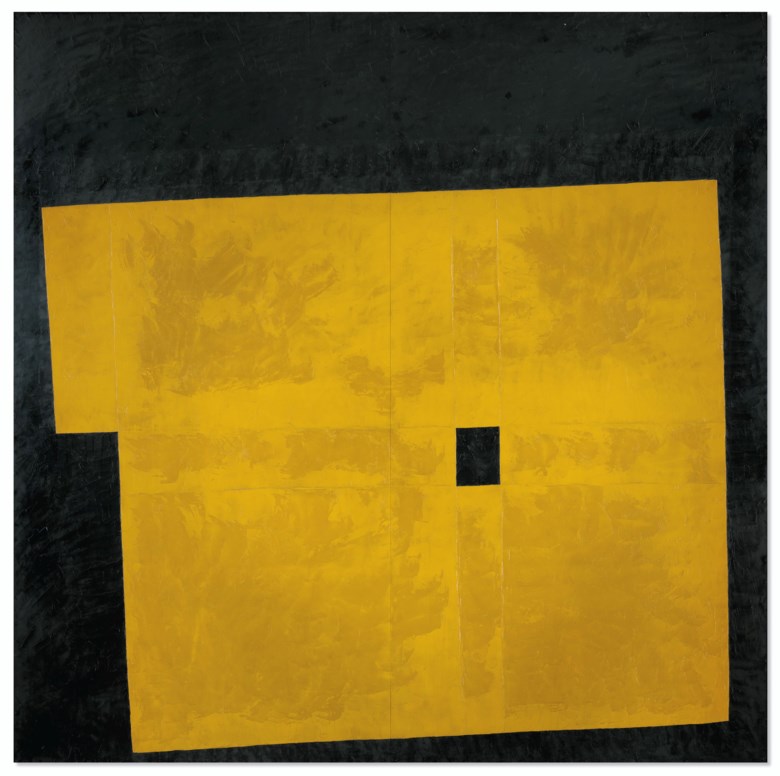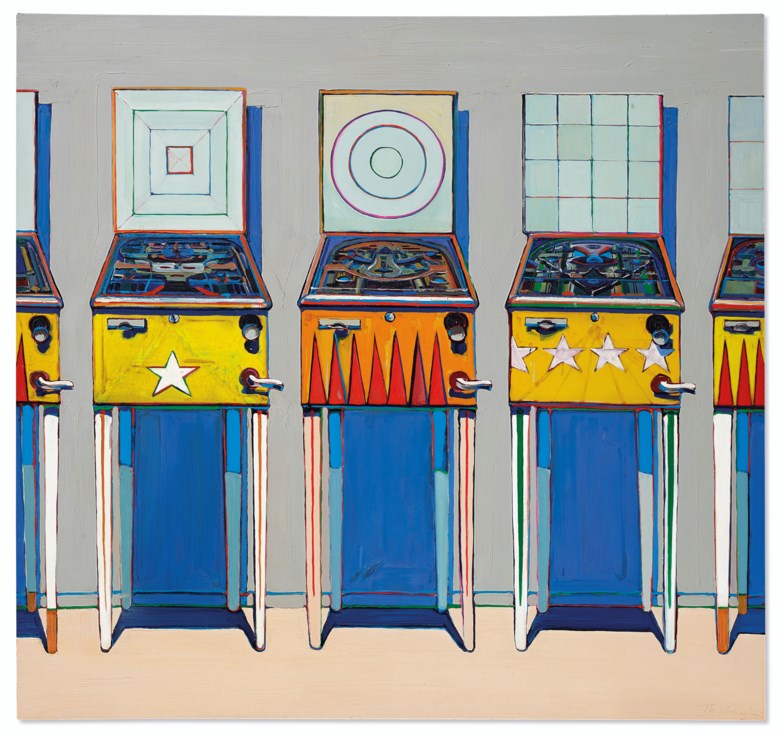Christie’s freshly minted relay sale, ONE, was hosted by live auctioneers simultaneously in Hong Kong, Paris, London and New York on Friday 10th July 2020. Consolidating the entirety of Christie’s top tier summer auctions into a single event, the sale demonstrated the potential of a defensive commercial strategy prioritising quality over volume. While a handful of lots were withdrawn (presumably due to lack of interest), the house achieved remarkably solid sell-through rates of 94% by lot and 97% by volume.
Touted as a ‘global’ relay, more than half the lots were sold from America – still the world’s most important market – with relatively tokenistic clusters held in Hong Kong, Paris and London. That said, each location conformed in a fashion to historical type. Hefty works with hefty guarantees were reserved for New York, while estimates in Paris were more reasonable. Some limited local inflection was further evidenced, for example, by the Ben Nicholson sold in London, and the more expensive Zao Wou-Ki offered in Hong Kong.
More than a third of the sale was guaranteed, many of which were subsequently passed on to third parties. This enabled Christie’s to consign A / A+ grade works, with few of inferior quality. The sale also sensibly favoured works which reproduce well online, engendering a sense of confidence in buyers unable to view in person.

Consolidating an entire auction season into a single sale allowed for a handful of more unusual contrasts. Jean Prouvé’s ensemble (1946 – circa 1955) (Design) and Théo van Rysselberghe’s Barques de pêche–Méditerranée (1892) (Impressionist and Modern), comprised a sale with notable gravitas which nonetheless concluded with Maurizio Cattelan’s drowned, polyurethane figure Daddy Daddy (2008). Eliding three distinct auction categories worked solely on the basis of the strength of the works offered. Lesser material would not bear such a disregard for art historical lineage or classification, although it demonstrates how far ‘cross-collecting’ has progressed as a commercial strategy for the auction houses.

Making USD 420 million in total, the sale’s top lot was Lichtenstein’s late Nude with Joyous Painting (1994) which made USD 46,242,500 with fees and, impressively, auction records were set for seven artists. In Hong Kong, Yellow Quadrangle (1959) by Takeo Yamaguchi made HKD 15,125,000 against an estimate of HKD 2,000,000 – 3,000,000, while George Condo’s Force Field (2010), made HKD 53,150,000 against an estimate of HKD 18,000,000 – 28,000,000 (final prices include fees, estimates do not).

New York’s saleroom saw new auction records for Complements (2004 – 7) by Brice Marden, making USD 30,920,000 against an estimate of USD 28,000,000 – 35,000,000 and Wayne Thiebaud’s Four Pinball Machines (1962) sold for USD 19,135,000 against an estimate of USD 18,000,000 – 25,000,000. Lots by Manolo Millares, Ruth Asawa and Richard Avedon completed the complement of new records.


Wayne Thiebaud (b. 1920), Four Pinball Machines, 1962. Oil on canvas. 68 x 72 in (172.7 x 182.8 cm). Sold for $20,137,500 in ONE: A Global Sale of the 20th Century on 10 July 2020 at Christie’s in New York. © 2020 Wayne Thiebaud / Licensed by VAGA at Artists Rights Society (ARS), NY
Understood on its own terms and against developments of the past few months, this auction – and those accompanying headline sales at Sotheby’s and Phillips in recent weeks – should be seen as an unqualified success. The relay format was unusual, more specifically as a successful experiment which should not be repeated. Auctioneers are hubristic, demanding creatures and four competing for attention was a distraction. A starting delay of nearly 50 minutes, while clearly unintentional, was likewise an unforced error. Similarly, fielding bids from the book, online, the phones and (very) limited saleroom attendance, simultaneously, from four locations, works – but not well.
Online selling has clearly come of age, both in terms of the prices paid and the audiences reached (a reported 80,000 globally, with some 60,000 from Asia via social media platforms according to Christie’s). But while virtue has been decisively fashioned from necessity, bigger volumes and lower price points must return. Crunching so much of the auction season into one ultra-conservative, super blue-chip, defensively hedged sale will not sustain the fine art departments at Christie’s, or indeed any of the major auction houses, for long. We eagerly await the notoriously tricky second album in the autumn season.
Image Credits: Christie’s


